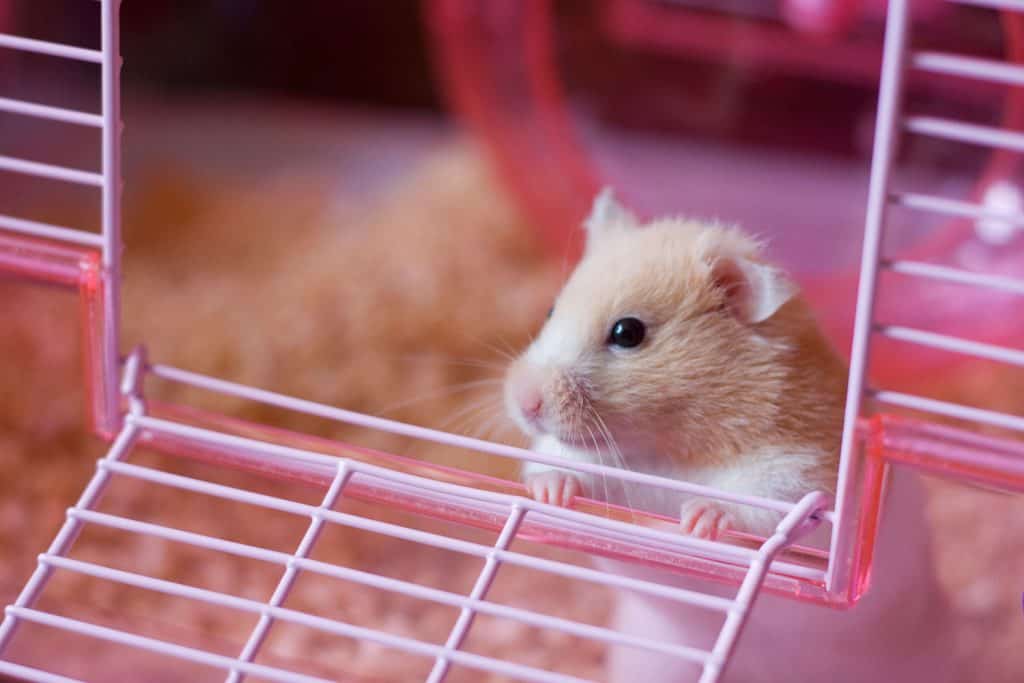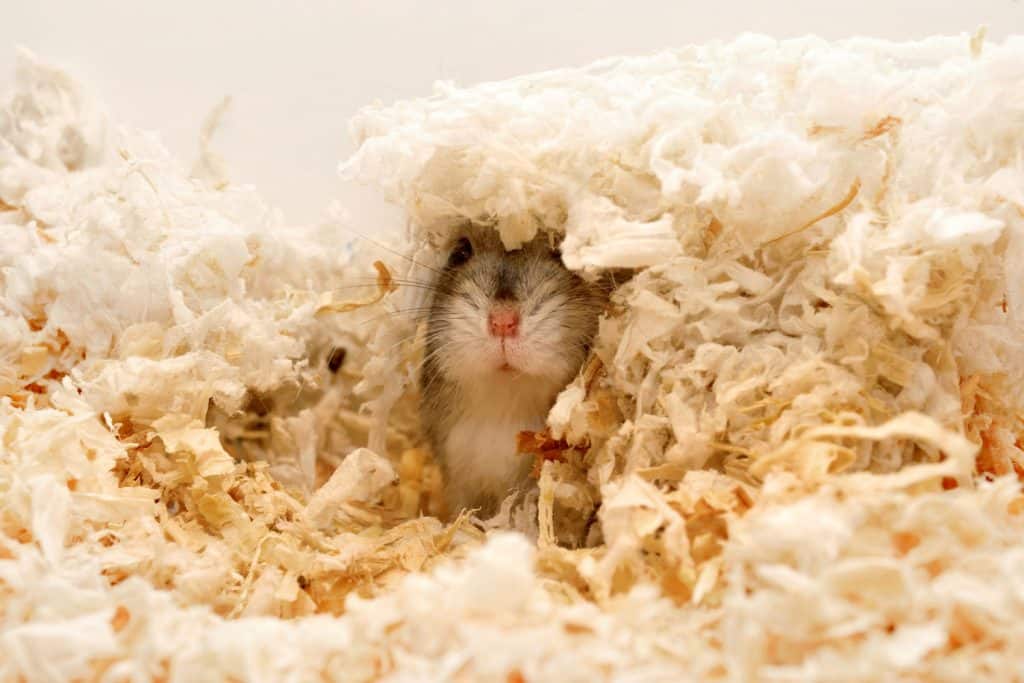Is your hamster hiding? You might be wondering why your hamster prefers to tuck its small hairy body into the corner of its cage.
Perhaps you’re anxious because they’re hiding beneath their blankets when you walk into the room.
We were wondering the same thing, so we did some research and created this special guide for hamster owners!
The primary reason hamsters hide is a regular burrowing habit. You may see a lot of activity beneath your hamster’s bedding.
These little rodents like exploring, burrowing, and creating hideaways along the road for play and sleep.
Your hamster may also be hiding in their play structures or tunnels. When they aren’t storing it in their fat cheeks, they like finding locations to hide their food.
Hamsters are naturally curious creatures, and hiding and burrowing are just part of what they enjoy doing!
The majority of the reasons your hamster hides are natural and healthy! Burrowing and concealing are prominent hamster features.
There are, however, certain drawbacks. A hamster’s concealing tendency, especially if it is new or unexpected, might sometimes suggest a problem.
Read on to uncover the numerous reasons why your hamster is hiding and see whether there’s anything you need to be doing about it.
Do hamsters like to hide?
Hamsters have a natural instinct to hide. They are often shy creatures who prefer to burrow or hide out of sight.
These inquisitive creatures enjoy exploring their cage’s nooks and crannies, curling up in small spaces and hiding beneath objects.
This behaviour evolved to help them protect themselves and hide from predators, but it also helps them feel safe and allows them to rest.
Is It Normal For My Hamsters To Hide?
It is completely natural for Hamster to hide.
However, you should be cautious if their behaviour changes or if they hide more than usual.
For example, if you have a new Hamster, it is natural for them to hide anytime you are present.
However, you will note that as time passes, they become accustomed to your presence and stop hiding.
On the other hand, if your Hamster has suddenly begun to hide more than normal or is not even coming out to take its food, it is possible that your Hamster is unwell.
There are numerous reasons why your hamster may be hiding. You should be cautious, though, if their hiding behavior is sudden and odd.

Where can hamsters hide?
Hamsters don’t just hide in their cages, where you can find them curled up under their bedding, in the corner, or under or beneath their play structures.
If they manage to break free from the cage, you’ll need to know where to seek them. Consider small areas.
Hamsters enjoy hiding within or beneath the furniture. Examine the area beneath the bed or couch, within closets, and even inside cushions and pillow coverings.
Look in shoe boxes, behind your entertainment system, or anyplace warm, such as beneath a heater.
They could even be hiding in the bathroom, drawn there by pleasant odours, or in the basement.
Try these hiding spots if you need to know how to discover a misplaced hamster. At the cage door, you may also entice your pet with their favourite snacks.
How to get your hamster to stop hiding
If you think your hamster is hiding too much, you can help your furry friend get back on track by doing some things at home.
You can get your hamster to act normally by doing some simple but helpful things.
A good place to start is with a healthy home.
Provide lots of space to run and play!
Hamsters love to run, and some of them can run up to 5 miles a day. A hamster needs a home that is a good size and has accessories.
There are many choices, such as a climbing tube, hamster wheel, and activity ball.
If your hamster isn’t as active as it used to be, it may be because they aren’t getting enough to do. They may need different toys to keep them moving.
There are also cheap solutions that work, like giving your hamster an empty toilet paper roll to play with and chew on.
Let your hamster sleep without interruption
Put the cage in a room where the hamsters can sleep during the day and run around at night.
This will help your hamster feel at ease enough to follow a healthy routine.
You shouldn’t put your hamster in a room where the lights will come on and off at odd times.
Remember, not all cages are created equal
Your hamster’s breed, size, and how many you have will determine what kind of cage you need.
If your hamster always hides in the same spot, it may need a bigger space.
You could try giving your hamster a bigger home with the right bedding so it can dig and explore.
Give your hamster time to adjust
When you bring your hamster home, you may be excited to hold it and want to put your hand in the cage so you can pet it.
We know they are really cute. But maybe you should give your hamster some space. Your hamster might be upset or even scared when you move to a new home, which is a new and strange place.
Let your hamster get used to their new home and get used to having a new friend around, you.
Your little furry friend will soon be happy to see you and can’t wait to show you what they can do.
And if want to know more about how to tame your hamster read this article.
Final Words
Hamsters are curious, adorable rodents.
Remember that your hamster digging and hiding is entirely normal! It is fairly typical for animals to hide during the day and burrow away to build tunnels or hide their food.
Excessive concealing can be alarming and may indicate that something is wrong. It is critical to observe your hamster’s behaviour without disturbing its normal behaviours.
If you feel your hamster is hiding because they are sick or injured, you should seek professional medical attention for your pet.
With careful care, your hamster will have a happy and healthy life that you will both treasure!






